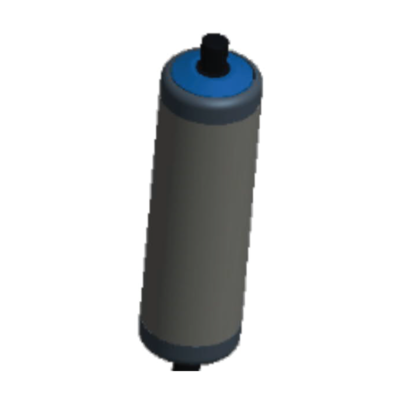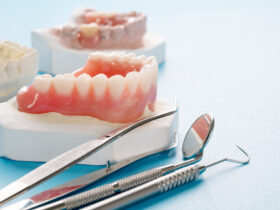In the world of industrial machinery, the smooth operation of moving parts is crucial to maintaining efficiency and minimizing downtime. Among the many components that contribute to this seamless movement, roller bushes play a pivotal role. Despite their seemingly simple design, roller bushes are essential for reducing friction, enhancing durability, and supporting the overall functionality of various machines. This guide provides a comprehensive overview of roller bushes, their importance, types, applications, and considerations for choosing the right ones for your needs.
1. What Are Roller Bushes?
Roller bushes, also known as bushings, are cylindrical components that act as a lining for rotating or sliding parts, providing a surface for the movement of rollers or shafts. They are typically made of materials like bronze, steel, or plastic, chosen based on the specific application requirements. The primary function of a roller bush is to reduce friction between moving parts, thereby extending the life of the machinery and improving its performance.
The design of roller bushes allows them to absorb shock and vibration, which is crucial in environments where machinery operates under heavy loads or high speeds. By minimizing wear and tear, roller bushes contribute to the longevity and reliability of industrial equipment.
2. Types of Roller Bushes
Roller bushes come in various types, each designed to meet specific operational demands. Understanding the different types of roller bushes can help you select the most appropriate one for your application.
a. Plain Bushes
Plain bushes, also known as sleeve or journal bearings, are the simplest type of roller bush. They consist of a single cylindrical piece with no moving parts, and they are used to support rotating shafts and reduce friction. Plain bushes are commonly used in applications where loads are relatively low, and there is minimal movement.
- Materials: Typically made from bronze, steel, or composite materials.
- Applications: Found in electric motors, pumps, and other low-speed rotating equipment.
b. Flanged Bushes
Flanged bushes have a similar design to plain bushes but include a flange at one end. The flange provides additional support and helps to retain the bush within its housing, preventing axial movement. Flanged bushes are particularly useful in applications where axial loads are present.
- Materials: Often made from bronze or steel, with or without lubrication grooves.
- Applications: Commonly used in automotive suspensions, gearboxes, and agricultural machinery.
c. Spherical Bushes
Spherical bushes have an inner surface that is curved, allowing for some degree of misalignment between the connected parts. This flexibility makes them ideal for applications where alignment is critical, and some angular movement is required.
- Materials: Typically made from bronze or steel, with a self-lubricating coating.
- Applications: Used in steering systems, hydraulic cylinders, and heavy machinery.
d. Split Bushes
Split bushes are designed to be easily installed and replaced without the need to dismantle the surrounding components. They consist of two halves that are assembled around a shaft, making them convenient for applications where frequent maintenance is required.
- Materials: Usually made from steel with a bronze or composite lining.
- Applications: Found in large industrial machines, conveyor systems, and marine applications.
e. Lubricated Bushes
Lubricated bushes are designed with grooves or reservoirs that hold lubricants, ensuring continuous lubrication during operation. This reduces friction and wear, making them suitable for high-speed or heavy-load applications.
- Materials: Made from materials like bronze, steel, or composite materials with integrated lubrication systems.
- Applications: Used in high-speed machinery, engines, and transmissions.
3. Importance of Roller Bushes in Industrial Applications
Roller bushes may seem like small components, but their importance in industrial applications cannot be overstated. They are critical for ensuring the smooth operation of machinery, reducing maintenance costs, and prolonging the lifespan of equipment.
a. Reducing Friction
One of the primary functions of roller bushes is to reduce friction between moving parts. Friction is the enemy of efficiency in mechanical systems, leading to increased wear, heat generation, and energy consumption. By providing a smooth surface for rotation or sliding, roller bushes minimize friction, allowing machinery to operate more efficiently.
b. Absorbing Shock and Vibration
In many industrial environments, machinery is subjected to heavy loads, high speeds, and constant vibration. Roller bushes are designed to absorb shock and vibration, protecting the machinery from damage and ensuring stable operation. This is particularly important in applications like heavy construction equipment, where reliability is paramount.
c. Enhancing Durability
By reducing friction and absorbing shock, roller bushes contribute to the overall durability of machinery. Components that would otherwise wear out quickly are protected, leading to longer service intervals and reduced downtime. This translates into significant cost savings over the life of the equipment.
d. Supporting Alignment
In applications where precise alignment is crucial, such as in steering systems or hydraulic cylinders, roller bushes play a vital role. Spherical bushes, for example, allow for some degree of misalignment, ensuring that connected parts can move smoothly without causing excessive wear or stress.
4. Factors to Consider When Choosing Roller Bushes
Selecting the right roller bush for your application involves considering several factors, including the operating environment, load conditions, and maintenance requirements. Here are some key factors to keep in mind:
a. Material Selection
The material of the roller bush is a critical factor that determines its performance and durability. Common materials include bronze, steel, and composite materials. Bronze bushes are known for their good wear resistance and ability to operate without lubrication, while steel bushes offer high strength and durability. Composite bushes provide a lightweight option with excellent resistance to corrosion and wear.
b. Load Capacity
Consider the load that the roller bush will need to support. High-load applications require bushes made from strong materials, such as steel or reinforced composites. Additionally, the design of the bush should be able to distribute the load evenly to prevent excessive wear and tear.
c. Operating Speed
The speed at which the roller bush will operate is another crucial consideration. High-speed applications require bushes with low friction coefficients and good heat dissipation properties. Lubricated bushes or self-lubricating materials are often preferred in such scenarios to ensure smooth operation and reduce the risk of overheating.
d. Environmental Conditions
The operating environment plays a significant role in determining the right type of roller bush. Factors such as temperature, exposure to chemicals, and the presence of moisture or dust can affect the performance of the bush. For harsh environments, corrosion-resistant materials or sealed designs may be necessary to ensure long-term reliability.
e. Maintenance Requirements
Consider the maintenance requirements of the roller bush. Some bushes, like lubricated or self-lubricating bushes, require minimal maintenance, making them ideal for applications where regular maintenance is challenging. On the other hand, split bushes are designed for easy replacement, making them suitable for applications where frequent maintenance is required.
5. Applications of Roller Bushes
Roller bushes are used in a wide range of applications across various industries. Some common applications include:
- Automotive: Roller bushes are used in suspension systems, steering mechanisms, and transmissions to reduce friction and wear.
- Industrial Machinery: Heavy machinery, such as construction equipment, mining machines, and agricultural implements, rely on roller bushes for smooth operation and durability.
- Aerospace: Roller bushes are used in aircraft landing gear, control systems, and engines, where reliability and precision are critical.
- Marine: In the marine industry, roller bushes are used in ship steering systems, winches, and deck machinery, where they must withstand harsh environmental conditions.
Conclusion
Roller bushes may be small components, but their impact on the performance and longevity of industrial machinery is significant. By reducing friction, absorbing shock, and supporting alignment, roller bushes play a crucial role in ensuring the smooth operation of various mechanical systems. Understanding the different types of roller bushes and the factors to consider when selecting them can help you make informed decisions that enhance the efficiency and reliability of your equipment.
Whether you are in the automotive, industrial, aerospace, or marine industry, roller bushes are indispensable components that contribute to the overall success of your operations. By choosing the right roller bush for your specific needs, you can optimize performance, reduce maintenance costs, and extend the life of your machinery.











Find Us on Socials